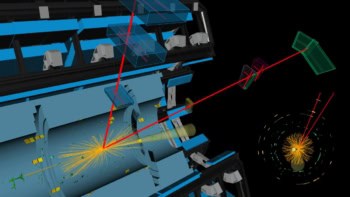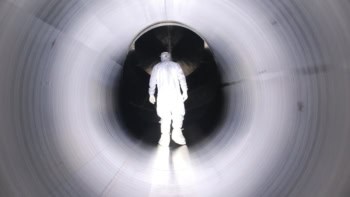
Physicists usually have no shortage of plans to build very expensive particle accelerators – but some researchers are working to make accelerator technology cheaper, and one way is to recycle much of the energy initially used to accelerate particles. A collaboration in the US has now shown it can successfully operate such an “energy recovery linac” by combining superconducting cavities with precisely designed permanent magnets.
The synchrotron has long been a popular way of accelerating electrons and other charged particles. Energy is transferred to bunches of charged particles by sending them through a series of radiofrequency cavities while magnets keep them on a circular path for thousands of orbits. These machines are widely used both as high-energy colliders and as sources of very bright X-rays for a wide range of science.
While this cyclic acceleration produces very high average powers, the bunches of particles will gradually spread out and lose intensity as well as polarization. As a result, linear accelerators (linacs) are used to create the brightest particle beams. These fire particles in a single shot along a straight section of cavities, yielding bunches with very high energies and exceptional intensities. But these machines also have a downside – they consume a huge amount of energy per shot, which limits their firing rate.
Best of both worlds
Energy recovery linacs (ERLs) are designed to combine the best of both worlds. These devices send electrons through a linac and then guide them around a circuit back to the accelerator entrance – with just a few having had their energy tapped along the way. This process takes place N times, with the particles gaining energy on each turn. Then the logic is reversed, thanks to a shift in the electrons’ path length of half a cavity wavelength. The particles travel another N times around the circuit, but rather than absorbing additional energy from the cavities they instead give it back. Once their turns are complete and they have shed all the energy they originally acquired, they are dumped.
With most of this energy transferred to other electrons subsequently injected into the circuit, which themselves go through the same 2N cycles, an ERL can accelerate a given number of particles using a small fraction of the energy consumed by the equivalent linac. In principle, this allows such a device either to generate much higher luminosities from a given electricity budget, or to consume less power for a given luminosity. While the latter option would reduce operating costs, both should lower construction costs – given that linac cavities are more expensive to build than the magnets used to steer electrons.
The idea is not new, having been put forward originally by Maury Tigner at Cornell University in the US in 1965. However, the scheme had to overcome a number of hurdles in the intervening decades. One has been developing the superconducting cavities that make linacs more energy-efficient. Another challenge has been merging beams at the linac entrance and separating them at its exit, as well as dealing with the higher-order modes inside cavities that can cause particle bunches to break up. Difficulties notwithstanding, the scheme has been put into practice at several locations including Novosibirsk State University in Russia, which operated a copper-cavity ERL with multiple turns (N=4) for the first time.
Multiple passes
The latest work, carried out by Georg Hoffstaetter of Cornell University and colleagues, makes progress by instead demonstrating multiple passes using a superconducting linac. The Cornell Brookhaven Energy-Recovery-Linac Test Accelerator (CBETA) has been built and tested at Cornell but relies on magnets developed by Dejan Trbojevic and team at Brookhaven National Laboratory. These are quite different to the electromagnets used in synchrotrons, whose fields ramp up to prevent electrons from flying out of the machine as they pick up speed — but cannot accommodate electrons with different energies. Instead, the CBETA magnets generate a field shaped so that it can simultaneously guide eight sets of electrons, with four different energies, around the circuit back to the linac. Being permanent, rather than electromagnetic, these “fixed-field alternating-gradient” magnets provide an additional energy-saving feature over traditional linacs.

US targets electron-ion collider to stay top in nuclear physics
Hoffstaetter and colleagues carried out the first test of CBETA in June last year, showing that the machine could recuperate 99.8% of its input energy after accelerating and decelerating electrons in single passes. Then just before Christmas, the researchers demonstrated the full complement of eight passes. As they report in a paper accepted for publication in Physical Review Letters, they took electrons 6 MeV kinetic energy and stepped their energy up to 42, 78, 114 and 150 MeV, before stepping the energy down so that it ended up back at 6 MeV.
The researchers say that the CBETA technology could be used in a variety of applications including medical isotope production, cancer therapy or in the manufacture of microchips. It has also been designed to show how to “cool” ions that will be collided in the $2bn Electron-Ion Collider approved for construction at the Brookhaven lab in January. Designed to probe the composition of protons and neutrons with unprecedented precision, the collider relies on minimizing particles’ energy to maximize collision rates.
Having shown that CBETA can work in principle, Hoffstaetter and colleagues are now working to boost its performance. To protect equipment and personnel, they restricted the machine’s current on the December run to just a few nanoamps. But they now want to raise that towards a target of 40 mA. “A push to high current will be the next stage of this accelerator,” they write.



